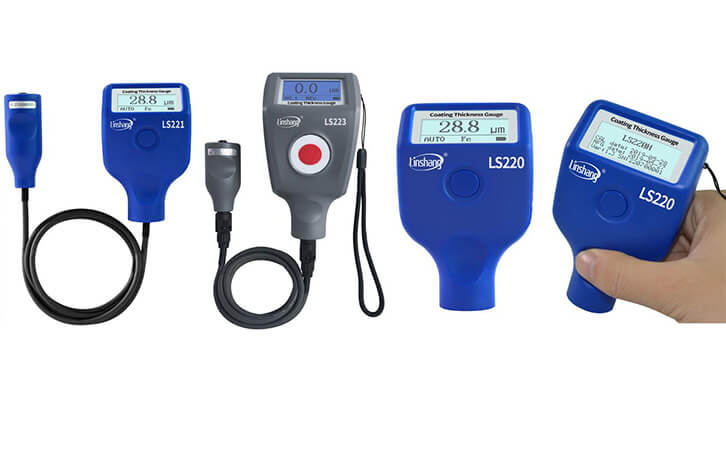Why Dry Film Coating Thickness Measurement is Important?
1. Importance of dry film coating thickness
The dry film thickness of the protective paint coating is very important for anticorrosive coating. Its importance is reflected in the following two aspects:
(1) Functional aspects
The anticorrosive coating thickness greatly affects the durability of the coating.
(2) Economic aspects
The coating thickness affects the amount of paint used and thus the cost of painting. Therefore, all parties involved in anti-corrosion coating projects should not over-emphasize the dry film thickness of the coating. However, the positions and attitudes of the parties on this issue differ. The owner and the supervisor representing the owner ’s interests, sometimes even exceeding the requirements of the technical specification; the double-packed coating contractor wants to be more generous to reduce the amount of paint and avoid repainting; It is expected to consume more paint strictly and sometimes to show that the paint solids are sufficient and cost-effective. Therefore, controversy about dry film thickness often occurs, especially when the specifications in the technical specifications are ambiguous.
2. Dry film thickness measurement
In general, dry film thickness measurement requires the use of a dry film thickness gauge. The dry film thickness gauge is an instrument for measuring the dry film thickness on metal or non-metal substrates. After obtaining the thickness, it can be compared with the standard thickness generally recognized by the measured object.
Some dry film thickness gauges only show measured values. Other models can store hundreds of data and can send the data to a computer for analysis. Dry film thickness is important in the coatings industry because it is a decisive factor for the quality, reliability and service life of coating products.

Many types of dry film thickness gauges can measure the dry film thickness as long as a suitable measurement method is used. According to the specifications of the Protective Coatings Association (SSPC), ASTM International or the International Organization for Standardization (ISO), destructive or non-destructive measurement methods can be used for dry film thickness measurement. Dry film thickness gauge has always been an important tool to ensure that the coating thickness is within the acceptable range. Modern technology has helped dry film thickness gauge manufacturers to produce smaller, more versatile dry film thickness gauges. Advanced dry film thickness gauges make measurements easier, faster and more accurate.
Different types of dry film thickness gauges use different principles-nondestructive magnetic induction measurement, ultrasonic measurement, eddy current measurement. Micrometers and paint gauges (PIG) are two instruments that use destructive thickness measurement methods. Environmental conditions such as extreme temperatures, as changes in temperature can affect the readings of the dry film thickness gauge instrument. There are also a few dry film thickness gauges in the development process, reducing the impact of the external environment on the instrument measurement. For example, Linshang LS221 dry film thickness gauge, with temperature compensation function, can be used at minus 20 ° for a long time. LS221 dry film thickness gauge ensure measurement accuracy at different temperatures.
In addition, the dry film thickness gauges are mainly LS220H, LS221, LS223, etc. These dry film thickness gauges mainly use magnetic thickness measurement and eddy current thickness measurement principles. It is suitable for the measurement of non-magnetic dry films on ferromagnetic metal substrates such as steel. It is also suitable for the measurement of non-conductive coatings and anodized layers on non-magnetic metal substrates. The measurement accuracy of the instrument is ≤ ± (3% of reading + 2μm). Linshang dry film thickness gauges meet the national "Paints and Varnishes-Determination of dry film thickness" ISO 2808: 2007, the national standard of IDT.
- High precision coating thickness gauge for used car
- Automotive paint protection films coating thickness gauge
- Plating Thickness Measuring Instrument for Detecting Anti-corrosion Coating
- Linshang LS220, LS191, LS160A– Necessary for Car Cover Inspection
- Coating Thickness Gauge for Second Hand Vehicle
- Zero Adjustment Step of Coating Thickness Gauge
